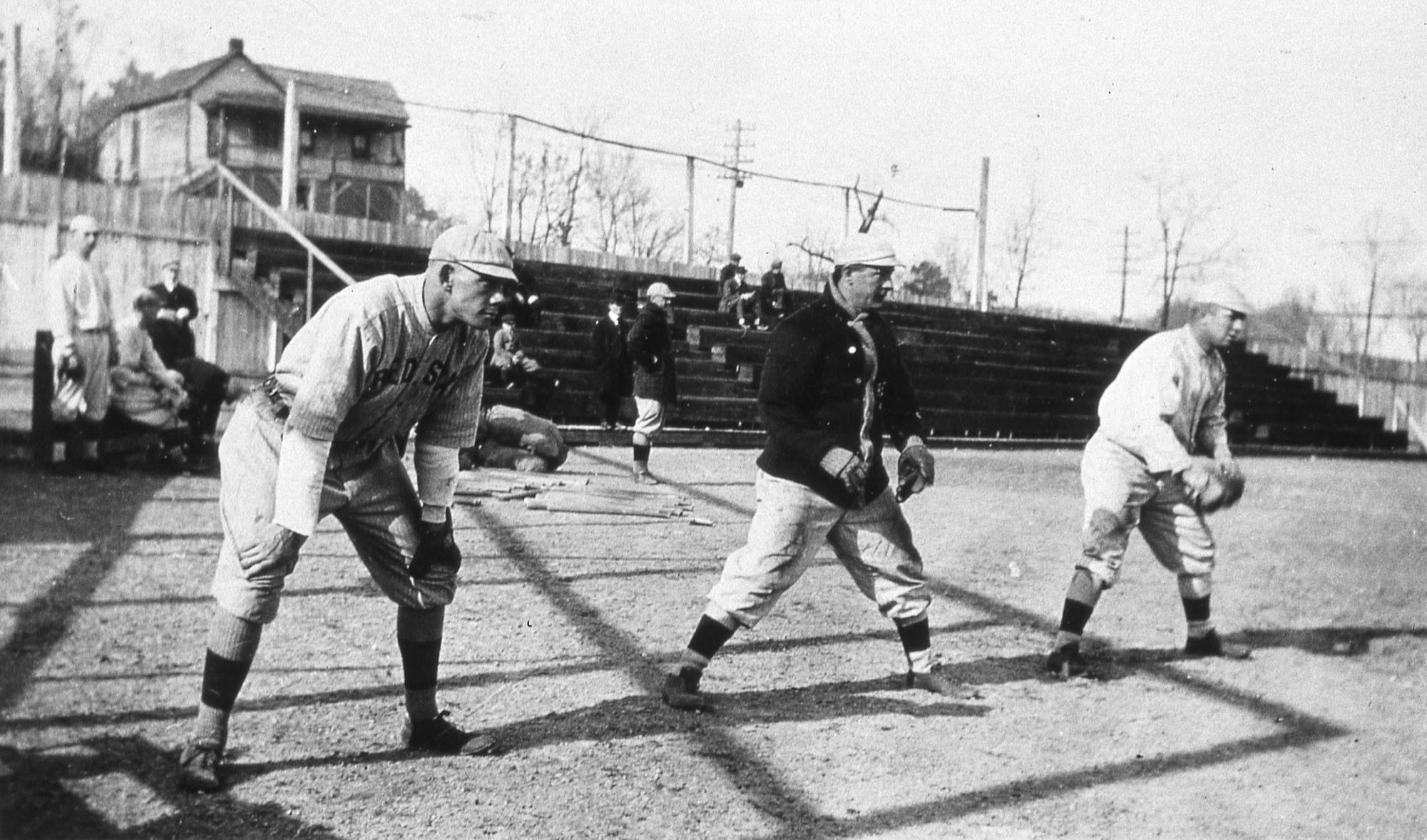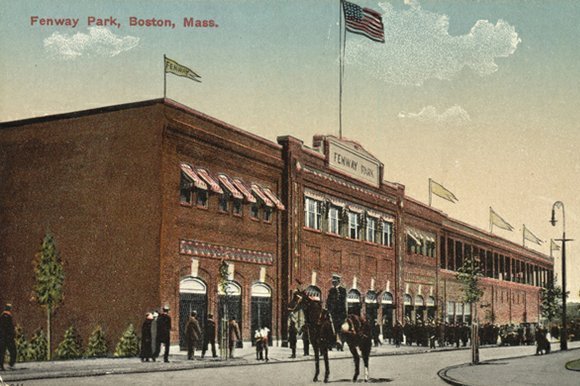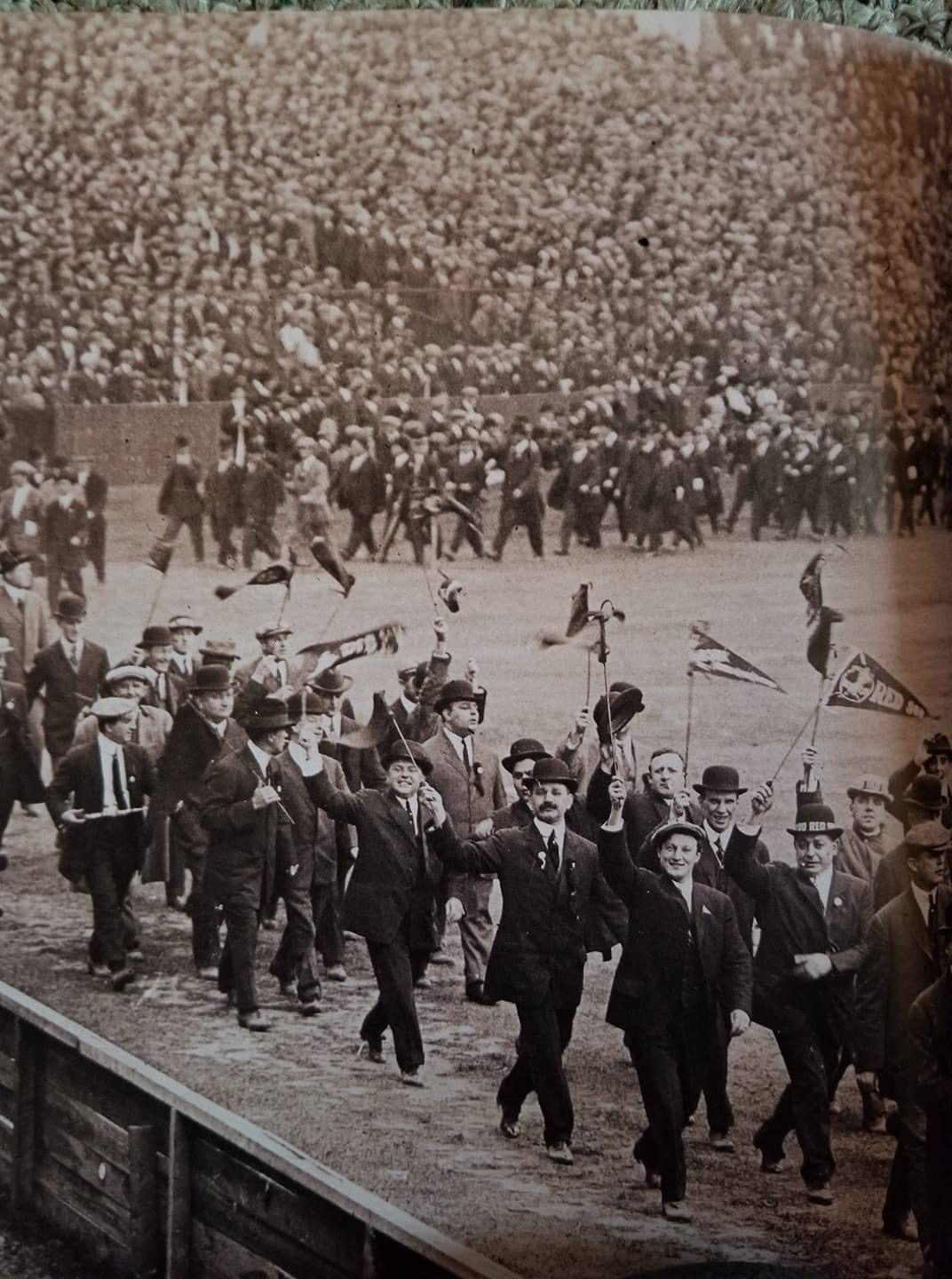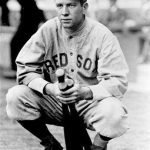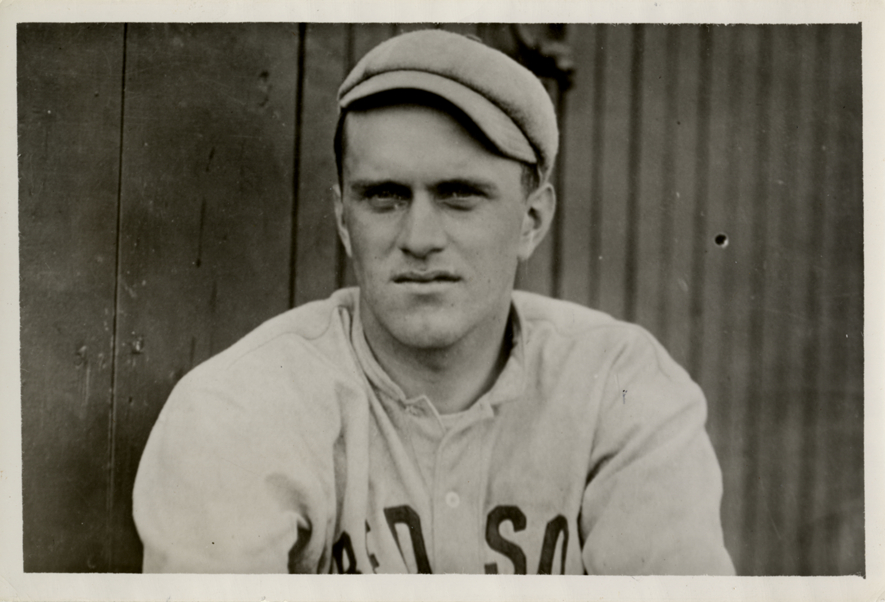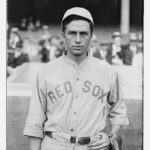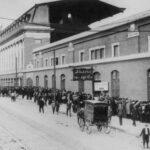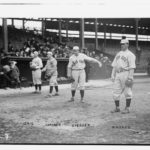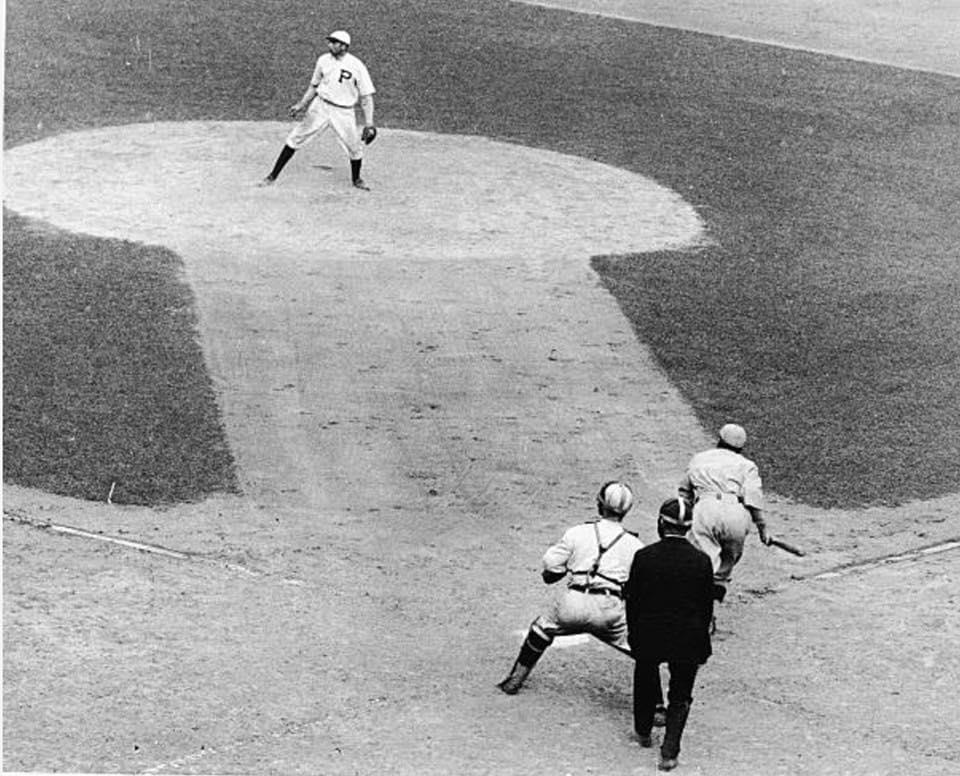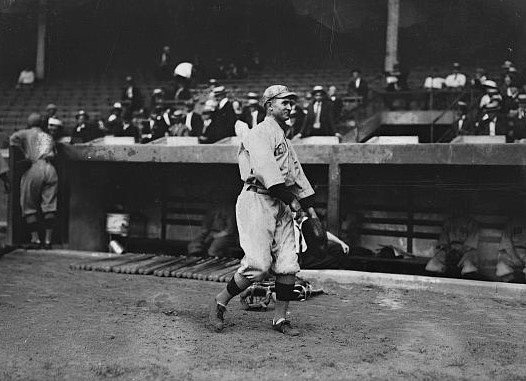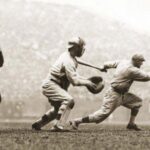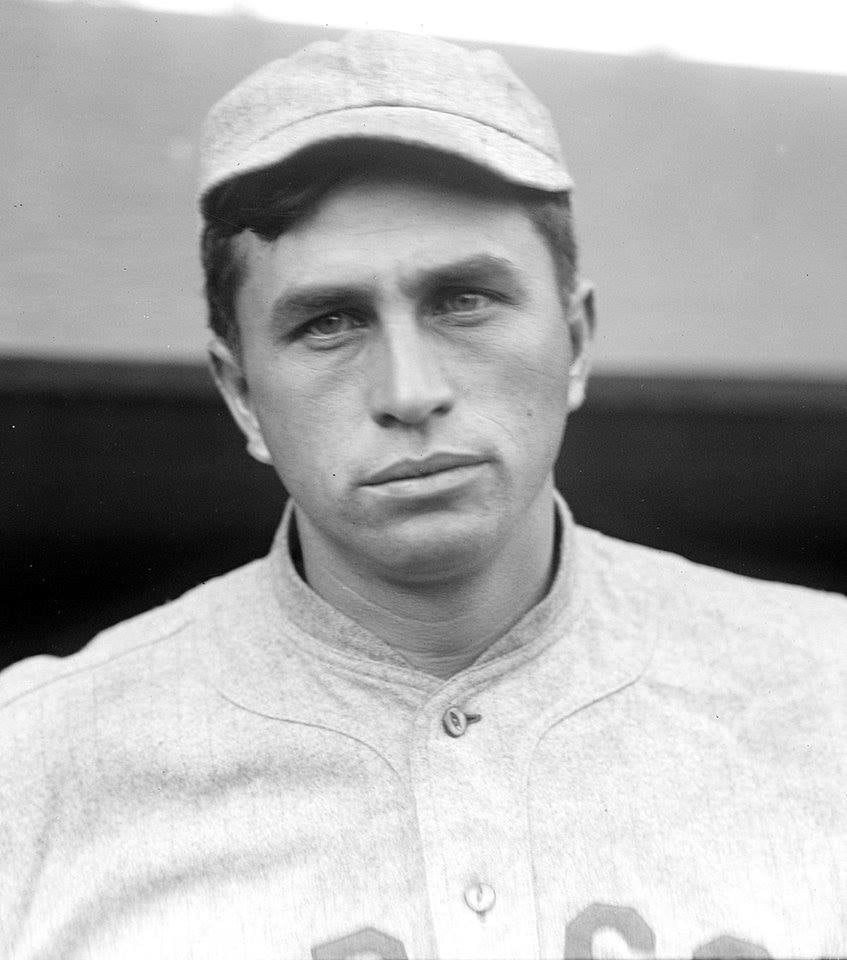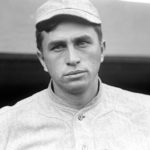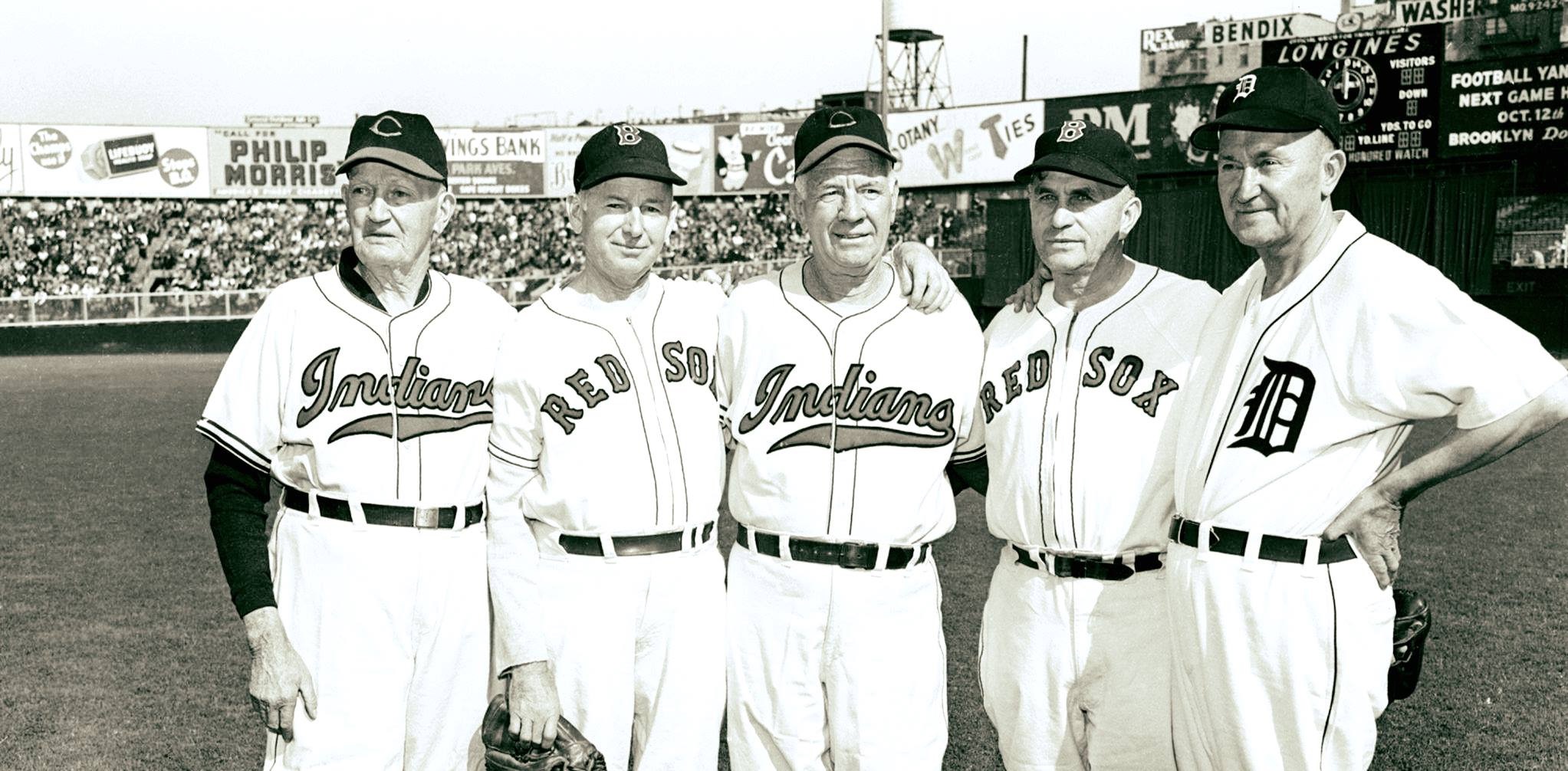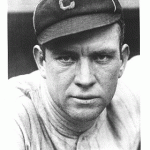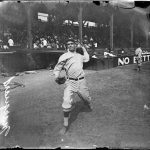Harry Hooper
Position: Rightfielder
Bats: Left • Throws: Right
5-10, 168lb (178cm, 76kg)
Born: August 24, 1887 in Bell Station, CA
Died: December 18, 1974 (Aged 87) in Santa Cruz, CA
Buried: Our Lady of Mount Carmel Cemetery, Aptos, CA
School: Saint Mary’s College of California (Moraga, CA)
Debut: April 16, 1909 (Age 21-235d, 3,146th in MLB history)
vs. WSH 4 AB, 2 H, 0 HR, 1 RBI, 1 SB
Last Game: October 4, 1925 (Age 38-041d)
vs. CLE 4 AB, 1 H, 0 HR, 1 RBI, 0 SB
Hall of Fame: Inducted as Player in 1971. (Voted by Veteran’s Committee)
View Harry Hooper’s Page at the Baseball Hall of Fame (plaque, photos, videos).
Full Name: Harry Bartholomew Hooper
Nicknames: Hoop
View Player Bio from the SABR BioProject
Players Who Debuted Same Year
Coming Soon
All-Time Teammate Team
Coming Soon
Notable Events and Chronology
Harry Hooper
Harry Bartholomew Hooper (August 24, 1887 – December 18, 1974), Hooper prided himself on being a college man of high ideals during an era when most ballplayers weren’t, and he nearly became a civil engineer before the lure of big money led him to sign with the Red Sox for $2,850 in 1909. Extremely popular with teammates, fans, and even opponents, he was the right fielder in the fabled “Million Dollar Outfield” with Tris Speaker and Duffy Lewis. He taught himself to play the difficult sun field and invented the famous rump slide to snare short flies and stop with his body those he could not reach. He was also the first American Leaguer to wear “flip-down” sunglasses in a game. He wore them in in 1911.
His strong, accurate arm accounted for 150 of the trio’s 455 assists. Hooper never led the American League in any of the important offensive categories, but he did compile a valuable .403 on-base average as the Red Sox leadoff hitter from 1909 to 1920, and became the Red Sox’ all-time leader in triples with 130 and in stolen bases with 300. He went on to collect 2,466 hits over 17 seasons.
The strongly religious Hooper was reputed to have prayed for a Boston victory in the final game of the 1912 Series and to have attributed to divine intervention his bare-handed, game-saving catch off Larry Doyle which prevented victory by the Giants. Years later at an old-timers’ game, Doyle was asked if he remembered Hooper and replied, “How in hell can I ever forget him!” In 1915 Hooper became the first player to hit two homers in a single World Series game.
On May 30, 1913, Harry Hooper became the first player to hit a home run to lead off both games of a doubleheader. He accomplished this against the Senators. It took 80 years for anyone to match this feat, when Rickey Henderson did so.
Recalling his years with the Red Sox, Hooper told Lawrence Ritter that it was he who convinced manager Ed Barrow to move young Babe Ruth to the outfield on the days when Ruth was not pitching in order to exploit Ruth’s crowd appeal and ability as a slugger. That was in 1919, shortly before owner Harry Frazee sold off his best players, including Ruth, for cash. Disgusted by the sales, Hooper held out for a salary of $15,000. March 4, 1921: Traded by the Boston Red Sox to the Chicago White Sox for Shano Collins and Nemo Leibold. After Boston owner Harrison Frazee sold off most of his star players, including Babe Ruth, Hooper was determined to get his just dues. In 1919 and again in 1920, Hooper held out for more money, but after agreeing to a contract, was dealt to the White Sox prior to the 1921 season for Shano Collins and Nemo Leibold, both outfielders. Both of those players best years were behind them,
White Sox, whose owner, Charlie Comiskey, hoped that the acquisition of a big-name player would restore credibility to his franchise, which had been shattered by the Black Sox scandal. The unhappy Hooper threatened to retire, but finally joined the White Sox for a salary of $13,250 which he told Comiskey he would accept as a goodwill gesture toward the new club. Five years later, when the White Sox had seemingly righted themselves with an influx of young talent, Comiskey reduced Hooper’s salary to a stingy $7,000.
Hooper retired to enter the booming real estate market. He later coached baseball at Princeton and was the postmaster of Capitola, California. Hooper was elected to the Hall of Fame in 1971. That was the era when just about anyone who had played the outfield between 1920 and 1935 and was still living, was elected to the Hall of Fame by the Veterans Committee.
Factoids, Quotes, Milestones and Odd Facts
Coming soon
Other Resources & Links
Coming Soon
If you would like to add a link or add information for player pages, please contact us here.


